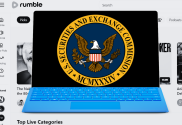In times of economic downturn, it’s no surprise that marketing budgets are the first to get cut. The percentage of overall revenue allocated to marketing budgets dropped by 4.4% between 2022 and 2023.
The instability of the fluctuating economy over the past few years makes it difficult to plan too far into the future. Yet, brands must be forward-thinking to maintain business continuity. This often requires marketers to seek solutions that can proactively provide the greatest return on investment (ROI) to protect against external factors.
Finding this ideal balance can be tricky, but there are key steps brands can take to build a safety net that can keep them afloat.
Invest in owned assets
Consider marketing strategies in terms of a significant investment, like home ownership. If you invest in properties you own and control, the value you put into them continues to impact your life long after you’ve purchased the home or remodeled the kitchen. If you rent, you’ll get value for as long as you pay. Once you stop paying, most, if not all, of the value is lost.
Owned assets are your brand’s controlled property, technically and creatively. Think: your website, messaging, and blog content.
By investing resources in your owned assets, your brand’s visibility within managed and leveraged channels like Google search, social media, and, yes, even advertising will grow organically.
In short, if you expand your website and optimize your brand content, you can sustain continued, self-propelling value across channels.
Use behavior data to truly connect with consumers
Leverage multiple data sources to truly understand what your target audience is looking for and where they spend time. That way, your brand can prioritize what answers to provide and where to direct content efforts.
Activating consumer search insights includes conducting surveys, monitoring social engagement, collecting organic search intent, reviewing website traffic, and tracking third-party research.
When pulled together, this data accurately represents the information people are searching for at any given time, providing your brand with the tools required to deliver solutions where they matter most.
Stick to efficient spending
Efficiency is key.
Avoid falling into the trap of reliance on traditional strategies that deliver leads with limited returns. Smart, not necessarily common, strategies yield greater bang for your buck. Simple, yet effective, is the motto for the foreseeable future. It can lay the groundwork for your brand to expand if there’s an increase in your brand’s marketing budget.
The owned asset optimization (OAO) method includes expanding and optimizing your brand content. And the returns are impressive. The OAO approach has been shown to drive five to seven times ROI and 87% lower cost-per-acquisition compared to paid-only strategies.
An independent paid strategy can only go so far. Still, suppose your brand’s foundation, the channels you control completely, is optimized, strengthened, and visible. In that case, you can create a natural failsafe to protect assets like ads in the event of an economic downturn.
Take on a challenger mindset
Using audience data to create a direct-to-consumer (D2C) content strategy is valuable for brands. It enables brands to meaningfully connect with consumers, even when they don’t follow the same product distribution model as D2C challenger brands.
No matter their business type, enterprise brands can (and should) think of themselves as publishers pushing their content distribution model directly to consumers.
Leveraging data-informed content not only helps cut out the middleman and keep budgets low, but it also builds trusted relationships directly with its customers.
Consider global brands that sell through retailers, like Johnson & Johnson. Even though they aren’t D2C, these brands must still convince consumers that their product is the right choice when faced with dozens of options in-store. Publishing data-informed content online that’s optimized for visibility will help them achieve this drive, better brand trust, and support future purchasing decisions.
Prioritize consumer service over transactions
In a down economy, businesses and marketing departments aren’t the only ones stretching lean budgets—consumers are, too.
Instead of trying to create sales where they might not exist, focus on serving your audience, building trust, and earning their purchases before they have the money to spend with you. Building brand equity before and during economic downturns builds resilience.
This means your brand is better suited to maintain consumer awareness, market share, and differentiation from competitors. Implementing an OAO strategy reminds consumers that your brand exists and offers solutions they might need down the line.
Consumers who find brands that understand their needs, speak their language and share their values are likelier to stick with those brands through economic headwinds. By building content that delivers the most relevant value possible, you show audiences that you care enough about their needs to invest in fostering authentic relationships.
Featured Image Credit: Nataliya Vaitkevich; Pexels





